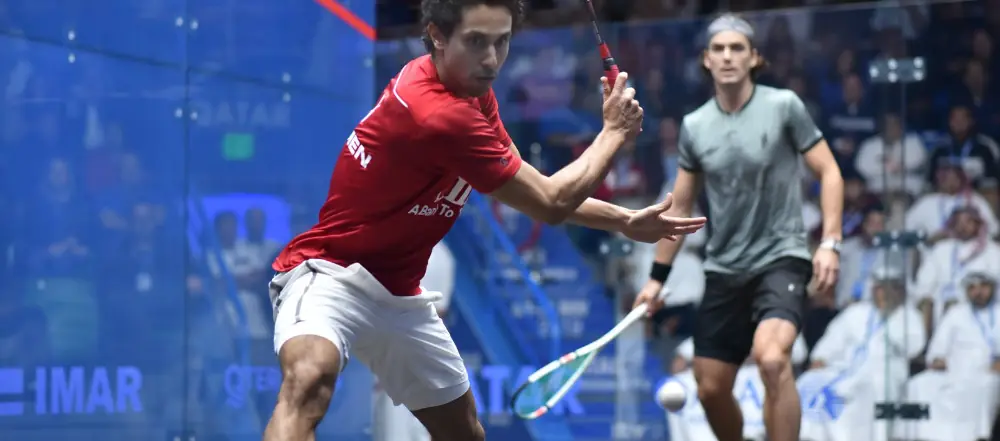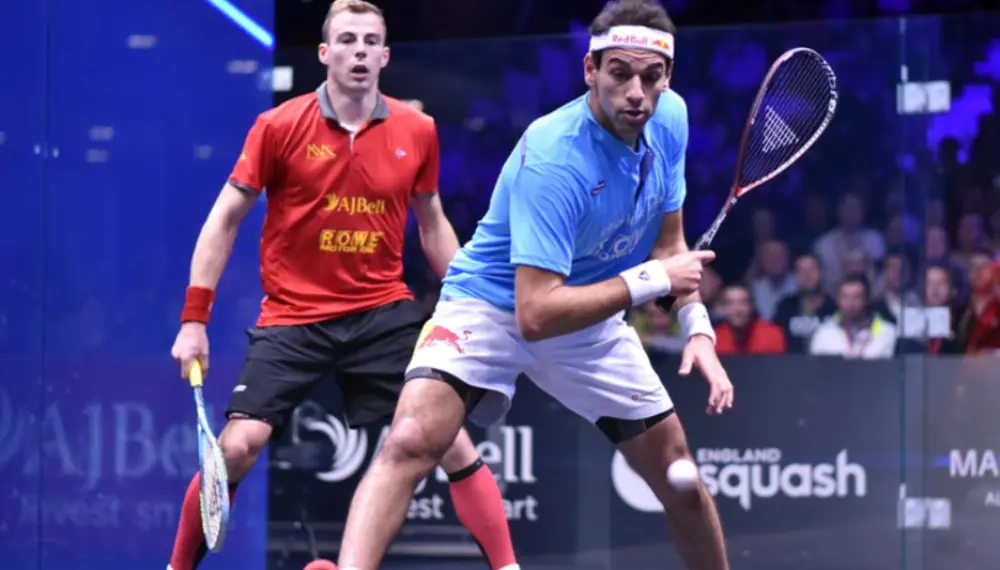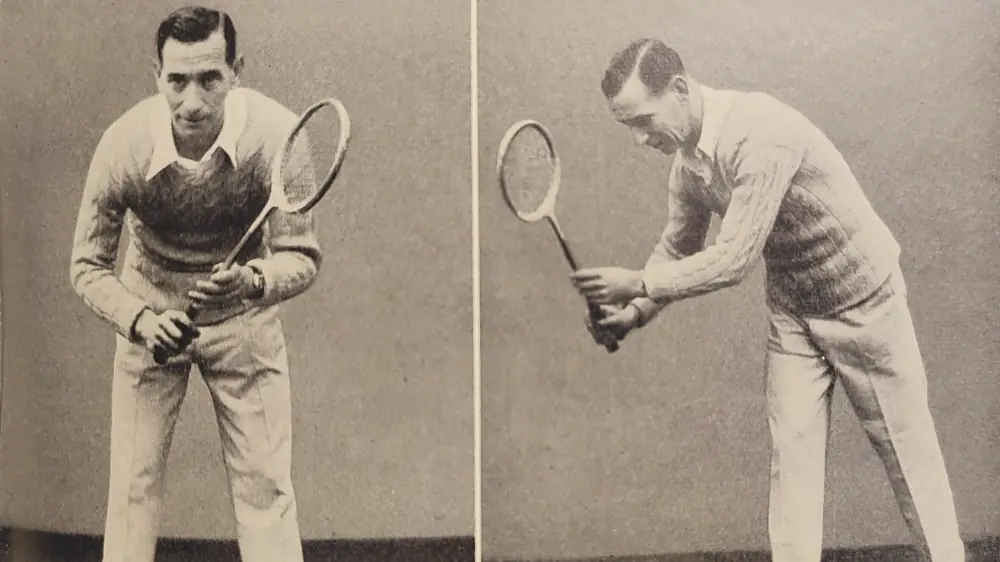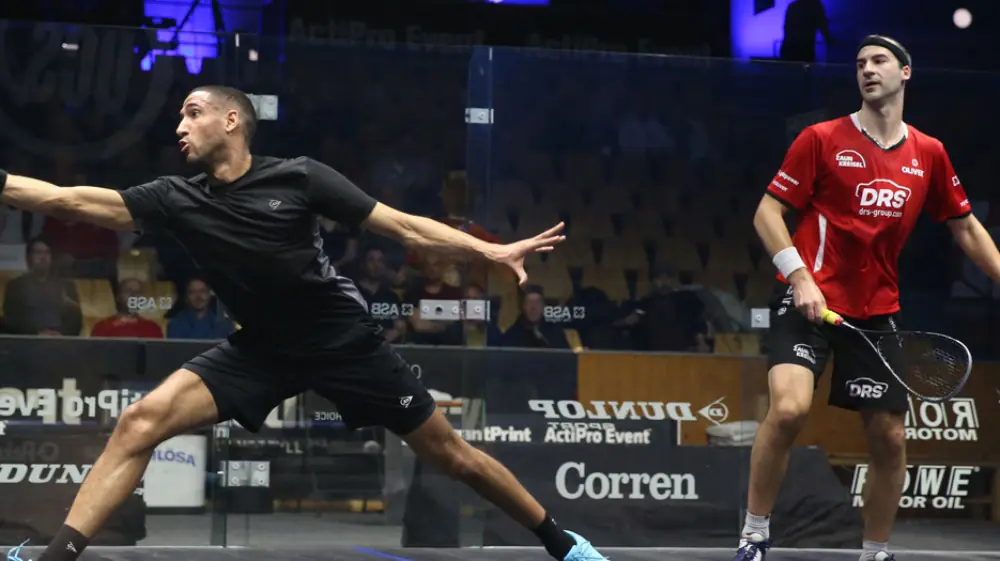13 October 2022 / 3-Min Read / Translate
That’s right, you can’t always copy what the pros do. Trying to emulate most things that professional squash players do is a good way to approach squash. But not everything. You don’t practice for hundreds, maybe thousands of hours per year on court. You might not have been playing since you were a child. Imagine how many hours a squash player has spent on court since they were 11 years old. By the time they are 22 or 23 years old, they could have easily spent 10,000 hours.
Here are two photos showing pros NOT keeping their racket up – naughty boys! As you can see, both Paul Coll and Nick Matthew have their racket low and below their wrist. So why am I recommending you keep your racket up? Simply because their reactions and body control is so much better than yours (and of course mine!).

Paul Coll with a low racket

Nick Matthew with a low racket too
An amateur has a different set of priorities and responsibilities, so in this case, yes, I recommend you try to keep you racket above your wrist.
As I have already mentioned, a professional squash player’s reactions are much faster than yours. They can get the racket into position very quickly. They can see and react to opportunities the amateur can’t. And in the case of keeping the racket up, the ability to volley more shots is the main benefit.
You only need to watch a club match anywhere int he world to see players letting the ball go to the back because they were not fast enough to volley. Their reasoning is that when they try to volley, it’s not very good, and part of the reason it’s not very good is because they didn’t have their racket prepared early enough. The other reason is they don’t practice it enough – but that’s for another article.
I am not expecting the old-fashioned, stereotypical idea of keeping the racket near your throat as shown in the image below, which is taken from one of my favourite vintage squash books; More About Squash Rackets by Susan Noel.

The old-fashioned stance
Below you can see that Simon Rösner has his racket around waist high and is ready to volley, if the opportunity arises. It’s relaxed enough to be able to do for the whole match, but also allows faster response to those volley opportunities. Yes, the racket head is just below the wrist, but honestly, it’s fine.

Simon Rösner with his racket a little higher than Paul or Nick
Keeping you racket head even a little higher will offer amateur players a few more options during a match. I am not expecting you to suddenly begin to volley everything, but you should be able to reach a few more volleys per game. Remember though, that unless you practice those volleys, being able to reach them and playing good shots are two very different things.